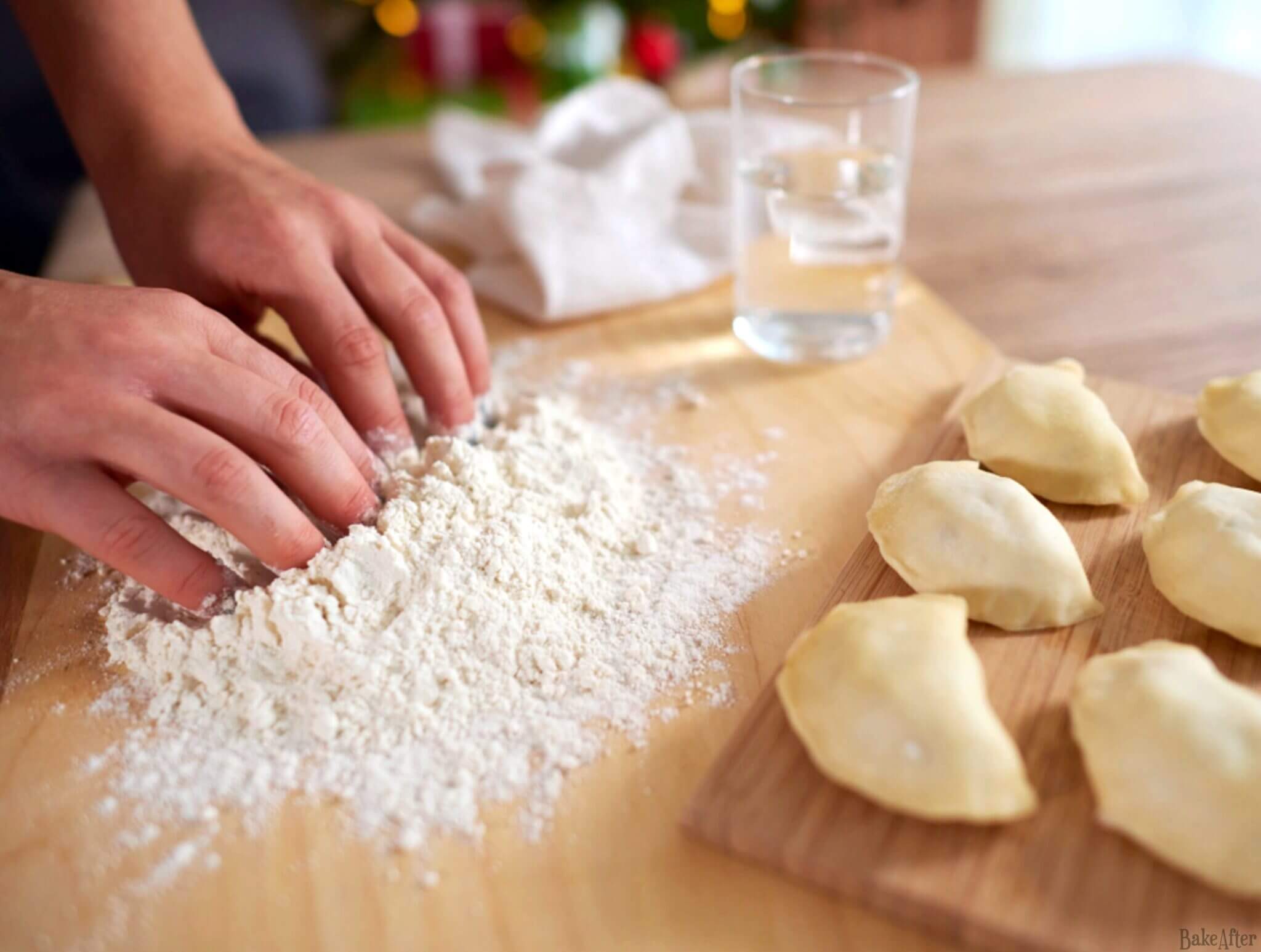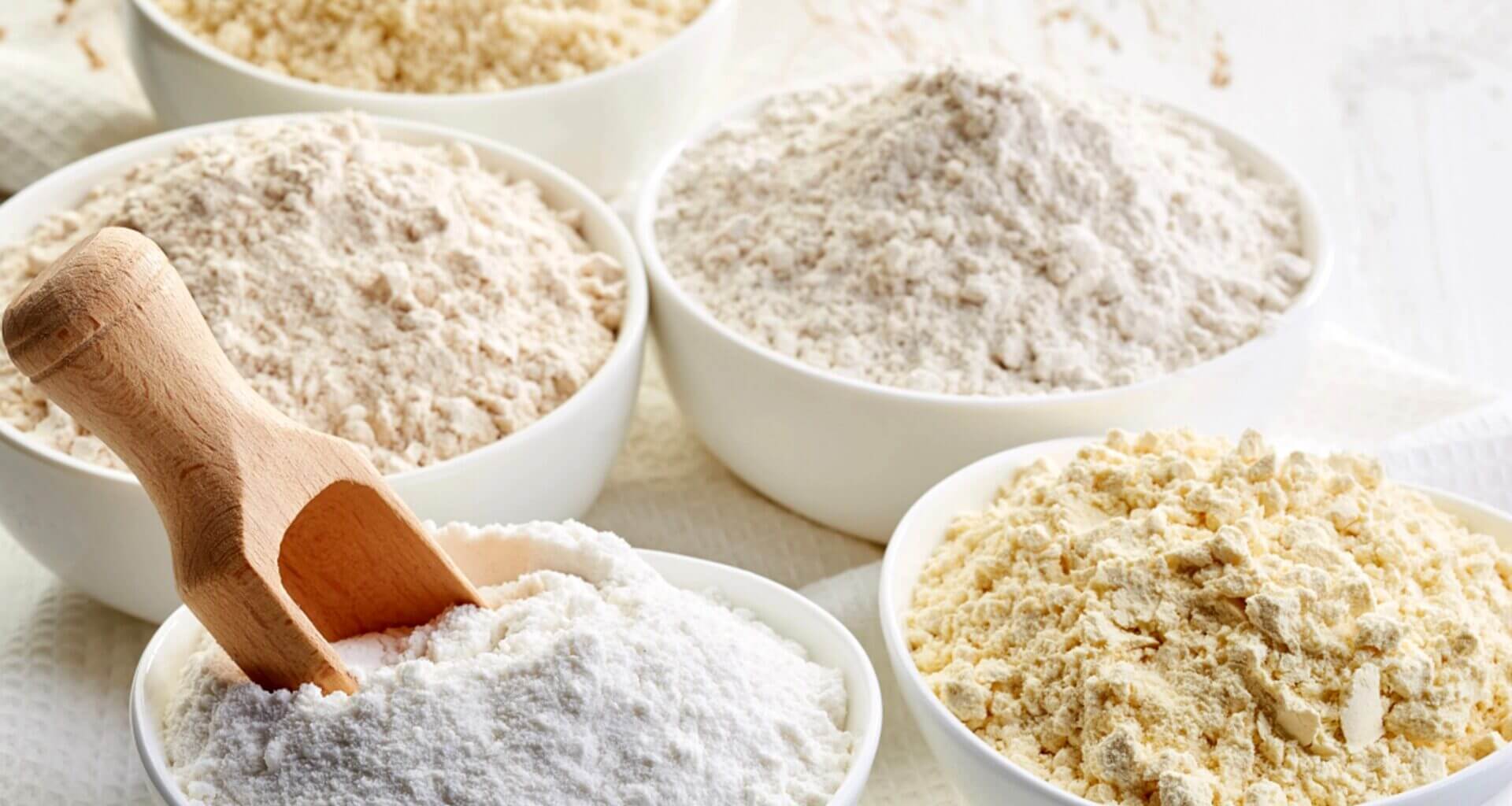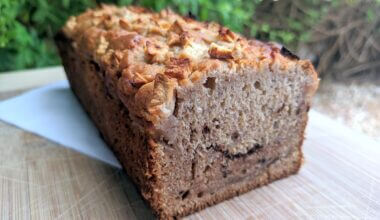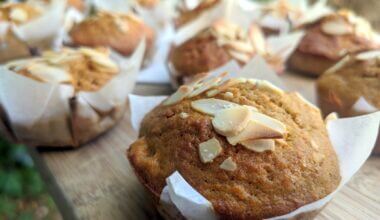Flour is one of the most basic ingredients in a pantry, but there’s a lot more to it than you might think, it’s a dried, ground powder made from grains (or other starchy ingredients), with its main characteristic being its high starch content.
Flours can be used for all types of baking and cooking, and with grain-based flours, we usually separate them into whole grain flours where the entire grain is ground, or refined flour where the bran is removed.
However, wheat flours have many variations, and choosing the right flour is crucial for making different dishes. You might use more refined flour to create delicate cakes or less refined flour to make, say, a more rustic bread.
Flours can also contain or not contain chemical leavening agents. However, since measurements aren’t the same for all brands, in some recipes (where precision is essential or if you’re using different types of leavening), you might want to use flour without leavening and add the correct amount yourself. This is especially important if you need to use biological or baker’s yeast.
The T-Number System Explained
OK, so you’ve seen those “T-numbers” next to some of the flour types, and you might be wondering, what’s up with that? 🤔 In many European countries, wheat flours are classified by a number (like T45, T55, T65) that tells you how refined they are.
This number is based on the mineral content (or “ash content”) of the flour after it’s been burned. The lower the number, the whiter and more refined the flour, meaning more of the bran and germ have been removed. A higher number means the flour is less refined and contains more of the whole grain. Think of it like this: T45 is very refined and perfect for delicate cakes, while a T150 is a whole-grain flour with all the good stuff left in! This system helps bakers know exactly what they’re getting and choose the right flour for their recipe.
Understanding Wheat Flour Types
Let’s start with the most common flours you’ll find in your local grocery store. In many countries, wheat flours are classified by numbers that indicate their level of refinement:
All-Purpose Flour (Similar to T55) – This is your go-to flour! It’s suitable for making cakes, tarts, and pastries, and can also be used for yeasted doughs. It’s the most common type of flour and works well for practically everything. When most American recipes call for “flour,” this is what they mean.
Cake Flour (Similar to T45) – This is the most refined and white flour, perfect for creating very light and fluffy batters like those used for fried foods, sponge cakes, or delicate tortes. It has a lower protein content, which means less gluten development and more tender results.
Bread Flour (Similar to T65) – This flour is most suitable for bread making, though it can also be used for cakes, tarts, pastries, cookies, empanadas, and yeasted doughs, especially when you want something a bit more rustic. It has higher protein content, which develops more gluten for better structure.
Whole Grain and Specialty Wheat Flours
Whole Wheat Flour (Similar to T150) – Used in bread making for whole grain breads. However, since it has a coarser grind than other flours, the result is a denser, heavier bread. That’s why it’s often mixed with bread flour to create a lighter but still whole grain bread.
Semi-Whole Wheat Flour (Similar to T80-T110) – Used in baking for semi-whole grain breads. Basically, it’s flour with a reasonable percentage of bran already included.
White Whole Wheat Flour – Made from white wheat berries instead of red ones, this flour has all the nutritional benefits of whole wheat but with a milder flavor and lighter color.
Alternative Grain Flours
Rye Flour (T70) – This flour is similar to the grind of wheat bread flour but made with rye. It’s perfect for mixing with wheat flour or making fluffy rye breads.
Coarse Rye Flour (T85-T130) – A more rustic, darker rye flour that’s good for making traditional dense breads and other larger, denser baked goods.
Rice Flour – Excellent for all kinds of frying and also for breads, especially if they’re steamed (as is common in Asian cooking traditions). It’s naturally gluten-free and creates a crispy coating when used for frying.
Corn Flour – Is a very fine powder made from dried corn. Think of it like the “all-purpose flour” of the corn world! Because it’s so fine, it’s great for thickening sauces and stews or as a binding agent in gluten-free baking.
Cornmeal – This is a coarsely ground flour from corn, with a gritty, sandy texture. It’s what you use to make classic cornbread, polenta, and grits. Its texture is perfect for adding a rustic feel to baked goods and for coating foods before frying to get a nice, crispy crust.
White Corn Flour – Has similar uses to yellow corn flour, but white corn tends to be harvested younger, so it has more sugar and less starch than yellow corn. This means they can be used for the same purposes but will have a different appearance and slightly different flavor.
Ancient and Heritage Grains
Spelt Flour – Healthier and great for breads, this is a different variety from common wheat. It’s usually sold in natural food stores, and the flavor is similar to wheat with an aromatic, slightly sour note.
Buckwheat Flour – Despite its name, buckwheat isn’t related to wheat at all! It’s another seed that’s also slightly healthier than common wheat, usually sold in natural food stores. The flavor is more distinctive and earthy. It’s traditionally used for pancakes, to make crepe batter, or to make soba (traditional Japanese noodles).
Oat Flour – Very healthy and can be used like regular flour for cakes and breads. It’s often used as an additive to reduce wheat flour or make a dish a bit healthier. You can easily make your own by grinding rolled oats in a food processor.
Barley Flour – Another grain that’s a bit healthier than wheat. Barley is widely used in beer production, but it’s also used like oat flour as an additive to make dishes healthier.
Legume and Nut Flours
Chickpea Flour (Garbanzo Bean Flour) – Made by grinding chickpeas into powder, this is widely used in Jewish, Indian, Arabic, Argentine, and Italian cuisines. It’s excellent for making socca, pakoras, and as a gluten-free binding agent.
Almond Flour – Made by grinding skinned almonds, this is used for making sweets with marzipan or as an additive to cakes. It adds richness and a nutty flavor to baked goods.
Soy Flour – Made from soybeans, it can be used to make soy milk but is also a good additive as a substitute for wheat flour in breads, cakes, etc.
Toasted Soy Flour (Kinako) – Basically used as a coating and for texture in various dishes, especially sweets.
Specialty Flours and Starches
Multi-Grain Flour – A baking flour that usually incorporates a mixture of flours and seeds, perfect for artisan-style breads.
Carob Flour – Used in some types of bread, usually mixed with wheat flour. It gives a dark color and characteristic flavor.
Semolina – Basically coarsely ground flour, used above all as an additive to make bread more whole grain or give texture to make a dish healthier and more rustic, since semolina is much less processed and still retains many of its healthy characteristics like fiber.
Wheat Bran, Oat Bran, etc. – These are the husks of grains (semolinas are the combination of bran with flour). They’re another good additive since they’re very rich in fiber.
Starches (Wheat, Cassava, Rice, Corn, Potato, etc.) – These remove the starch portion from flour (the carbohydrate part). They can then be used to thicken sauces or make cakes and other dishes smoother. The most well-known brand in the US is probably corn starch.

Essential Tips for Working with Flour
Here are some valuable tips I’ve learned over the years:
- Always buy flour as fresh as possible. Flour that’s 2 or 3 months old, especially if it’s whole grain, won’t create the same final product. So check the label and buy flour from stores with high flour turnover.
- Regular flour can last up to 2 years without problems if stored in a cool, dry place. Only when it smells rancid is the flour actually bad.
- Whole grain flours only last a couple of months, largely because the seeds contain oil, and oil in contact with air begins to oxidize and go rancid much more quickly. So the best way to preserve whole grain flours is to freeze them or keep them in the refrigerator.
- Nut flours can last from a few months to 1 year. Like whole grain flours, nut flours also have a high fat content, so they’re better stored in the freezer.
- Always buy small quantities of flour, especially if it’s not regular flour, and always store them in airtight packaging or jars. The less contact with air, the better.
- If you want to create more rustic dishes, choose coarser or whole grain flours. These will give texture and nutty notes that regular flour can’t provide.
- The coarser and more whole grain the flour, the more time you should let the dough rest so all parts of the flour have time to hydrate properly.
- Be careful with gluten-free flours. You should only prefer these if someone has an allergy or sensitivity to gluten because these flours tend to have inferior ingredients to replace what gluten creates in flour.
- You can always buy coarser flour and then grind it finer when you need it, depending on the recipe. The same goes for flours without leavening – if you need leavening, you just have to add it.
- When making cake batters, you can always substitute 1/3 of the regular flour with whole grain for a slightly more rustic version.
Choosing the Right Flour for Your Recipe
The truth is, for some preparations, especially fried foods with batters or bread where creating the perfect texture and flavor is important, it’s crucial to mix different flours.
- For Frying: Use cake flour or a specialized frying flour that combines refined flour with coarse semolina. This creates a flour that’s both fluffy and crispy – perfect for creating great fried foods.
- For Bread: Start with bread flour as your base, but don’t be afraid to mix in small amounts of other flours for flavor and texture.
- For Cakes: All-purpose flour works great, but cake flour will give you more tender results for delicate cakes.
- For Cookies: All-purpose flour is perfect, or you can use cake flour if you want more tender cookies.
Remember, when we talk about flour in general cooking, we usually mean all-purpose flour with leavening included, which is the most common type of flour in most countries.
A Sidenote About Gluten
Gluten is actually good for your health – it’s only bad for people who have gluten sensitivity. Outside of that, it doesn’t make sense to eat gluten-free products unless medically necessary.
If you’re experimenting with gluten-free flours like buckwheat, rice, or others, remember that gluten is what makes bread spongy and fluffy. That’s why gluten-free breads that are fluffy and spongy tend to have a lot of fat and many additives to add those characteristics to the bread.
There are no breads made from 100% buckwheat or most other gluten-free flours – they’re usually mixed with other flours to provide structure and good texture to the bread.
Final Thoughts
The important thing is always to experiment and see how things turn out! I’m also tired of making not-so-great dishes and weird puddings hehehe, but that’s how you learn!
Don’t be afraid to try different combinations – mixing flours can create amazing results. And remember, even if something doesn’t turn out perfect, there are always ways to use it. Super hard bread can be made into French toast, bread puddings, or breadcrumbs. Nothing goes to waste!
The world of flour is vast and exciting. From the basic all-purpose flour that sits in most pantries to exotic alternatives like teff or quinoa flour, each type brings its own characteristics to your baking and cooking. Start with the basics, understand how they work, and then branch out to experiment with the more unusual options.
Happy baking, and remember, the best way to learn is by doing!








